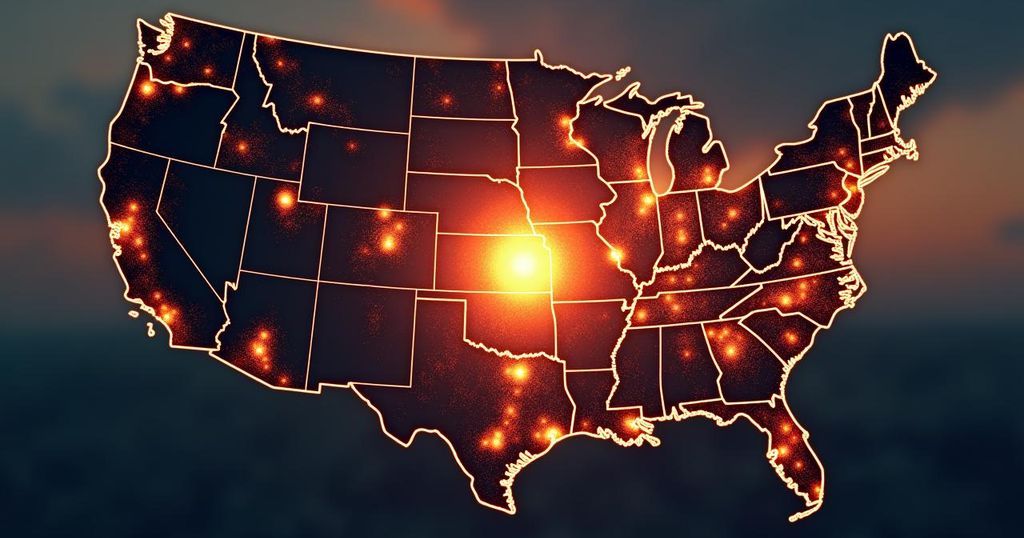A 4.1-magnitude earthquake registered in Dillon, Montana on October 7, 2024, as reported by the USGS. This event was part of a series of earthquakes that occurred in various locations including California, Tennessee, and Oregon, showcasing ongoing seismic activity in the region.
On October 7, 2024, a 4.1-magnitude earthquake struck Montana, as reported by the United States Geological Survey (USGS). The epicenter of the quake was located in Dillon at a depth of approximately 13.7 kilometers (or about 8.5 miles). At the time of this report, the USGS had received 120 accounts from individuals who felt the tremor. This seismic event followed closely behind a 3.7-magnitude earthquake that occurred in California on October 5, with its epicenter in Petrolia at a depth of 10 kilometers (approximately 6.2 miles). Prior to the California quake, Tennessee experienced a 2.5-magnitude earthquake on October 3, with the epicenter situated at a depth of 9.7 kilometers (around six miles). The sequence of seismic activity continued with a 3.5-magnitude earthquake reported along the Oregon coast on October 2, originating at a depth of 13.5 kilometers (8.4 miles). This coastal quake was noted just one day after another 3.5-magnitude earthquake was recorded in California on October 1, centered in Avenal at a depth of 11.4 kilometers (seven miles). In addition, a 2.7-magnitude earthquake occurred in Idaho on September 30, with its epicenter in Bonners Ferry, descending to a depth of 9.1 kilometers (5.7 miles). This Idaho activity followed a significant 6.3-magnitude earthquake near Mauritius on September 26, which was centered at a depth of 10 kilometers (six miles). Coinciding with this event, Canada reported a 4.0-magnitude earthquake that same day, focused in Saanichton at a notably greater depth of 52 kilometers (32 miles). Earlier, on September 16, a 5.2-magnitude earthquake impacted Romania, centered in Cașoca at a depth of 133.5 kilometers (83 miles), alongside a 5.1-magnitude earthquake in Texas that was recorded at a depth of 8.2 kilometers (5.1 miles), centered in Ackerly. In further seismic activity, Kansas encountered a 3.4-magnitude earthquake on September 19, originating in Danville at a depth of 4.9 kilometers (three miles). Additionally, the Northern Mariana Islands reported a 6.3-magnitude earthquake on September 16, which was centered in Saipan at a depth of 42.9 kilometers (26.7 miles). This was also preceded by a 3.4-magnitude earthquake in California on September 13, based in Malibu at a depth of 10.6 kilometers (6.6 miles).
Earthquakes are seismic events that result from the sudden release of energy in the Earth’s crust, leading to ground shaking and potential damage. The frequency of earthquakes can vary significantly across different regions, with some areas experiencing multiple tremors in a short timeframe. The United States Geological Survey (USGS) monitors and reports these seismic activities, providing essential data to understand patterns and potential impacts on communities. This report delineates a series of earthquakes within the United States and abroad, detailing their magnitudes, epicenters, and geological characteristics, illustrating the ongoing seismic activity that can occur in various regions.
In conclusion, the recent occurrences of earthquakes across Montana, California, Tennessee, Oregon, Idaho, and beyond highlight the persistent seismic activity that affects various regions within a short span. The reported magnitudes and depths provide valuable insights into the nature of these events, emphasizing the importance of monitoring and understanding seismic activities to ensure public safety and preparedness.
Original Source: www.iheart.com






